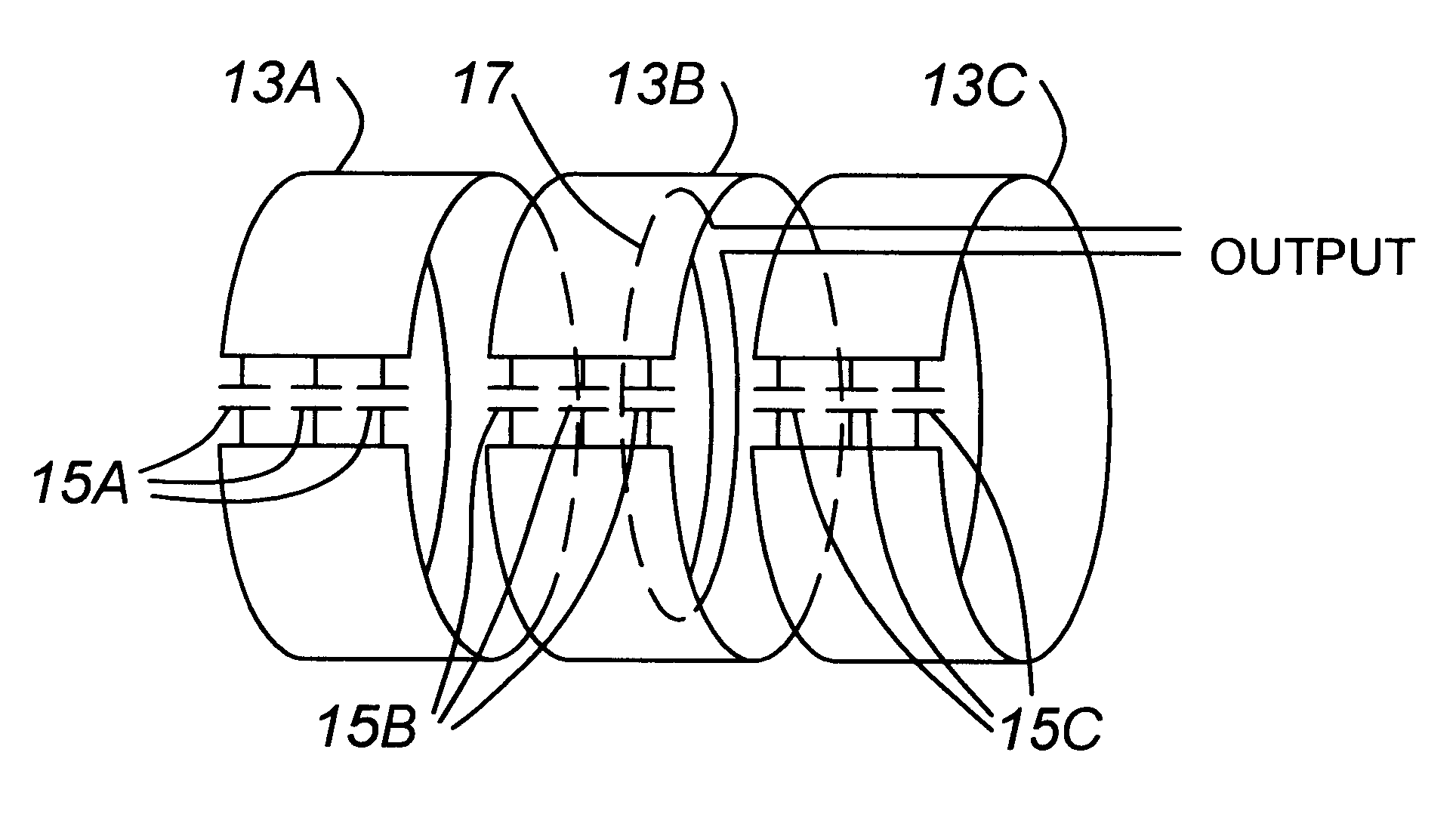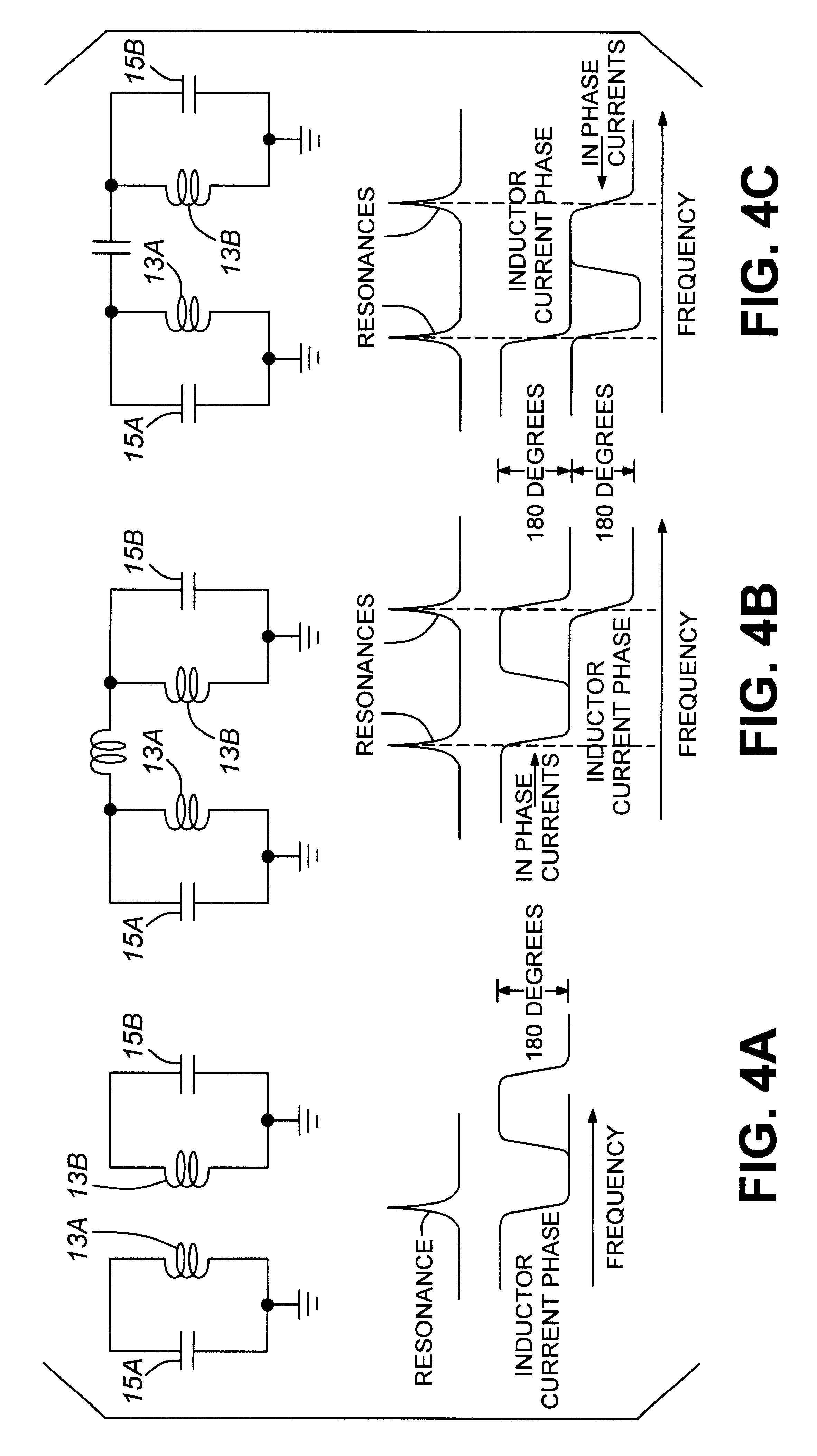Multiple coupled resonant loop antenna
a resonant loop and coupled technology, applied in the direction of antennas, antenna adaptation in movable bodies, electrical equipment, etc., can solve the problems of high reactive impedance of the antenna at the loop terminal, the low profile of the antenna, and the inability to be low above the conductive plan
- Summary
- Abstract
- Description
- Claims
- Application Information
AI Technical Summary
Problems solved by technology
Method used
Image
Examples
Embodiment Construction
The present invention is comprised of a predetermined number n co-linear wire or metal strip loops, each tuned with a capacitor. The individual loops are tightly coupled e.g. through mutual inductance.
In a preferred embodiment, as, shown in FIG. 3, loops 13A, 13B and 13C are constructed of copper strip in a circular (as shown, each similar to strip 13 of FIG. 2) or elliptical or rectangular cross sectional form. An output feed is taken from an additional loop 17 which is loosely coupled to the tightly coupled group of loops 13A-13C. The coupling is arranged so as to provide a matched feed to a transceiver element (not shown) to which the output of the loosely coupled loop 17 is coupled. At least one, but preferably more than one capacitor 15A, 15B and 15C is coupled to ends of the respective loops 13A, 13B and 13C.
Each loop, and group of capacitors or single capacitor sets, form a resonator (or tank), the resonant frequency of which can be changed by varying the capacitance of the a...
PUM
 Login to View More
Login to View More Abstract
Description
Claims
Application Information
 Login to View More
Login to View More - R&D
- Intellectual Property
- Life Sciences
- Materials
- Tech Scout
- Unparalleled Data Quality
- Higher Quality Content
- 60% Fewer Hallucinations
Browse by: Latest US Patents, China's latest patents, Technical Efficacy Thesaurus, Application Domain, Technology Topic, Popular Technical Reports.
© 2025 PatSnap. All rights reserved.Legal|Privacy policy|Modern Slavery Act Transparency Statement|Sitemap|About US| Contact US: help@patsnap.com



